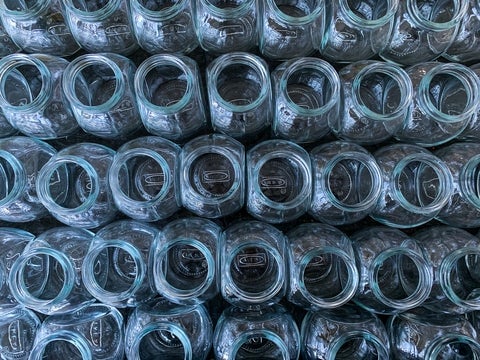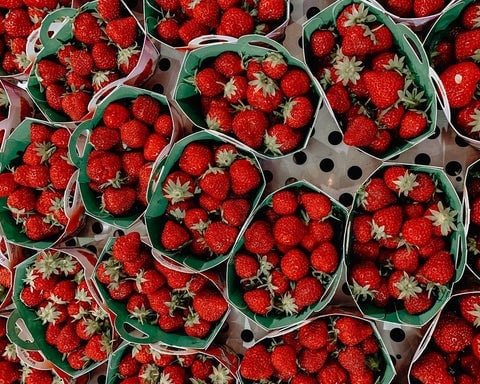How Much Money do CPGs *Really* Make? (CPG Profit Margins Explained)
No matter what stage your consumer packaged goods (CPG) business is at, money matters.
At the very beginning, you’d be forgiven for not turning a profit. Startup costs, smaller orders, and a lack of leverage could all contribute to a smaller profit margin.
However, it’s vital that you have a robust, realistic roadmap that will indicate how you’ll get into that profit green zone fast.
Profit margins do vary according to the type of CPG. For instance, beauty and personal care CPGs sold online and through brick-and-mortar can expect a profit of around 40%. The profit margins for food and beverage brands can sit anywhere between 20-35%.

Why is profit margin a key metric for CPG success?
You might have the most innovative idea for a world-changing CPG product, but if you can’t retain the necessary profit margins, you won’t make money. If you’re not making money, your business won’t stay afloat. If your business can’t stay afloat, you won’t get your product out into the world.
That’s why profit margins are so vital.
Once you secure your goal profit margin, the fun won’t stop there. You’ll then have to work on improving it. As your CPG product gains traction, you’ll be able to improve supply chain efficiency, place larger orders, and negotiate discounts with suppliers.
Your profit margin may not change drastically each year — it may be a matter of 0.2 percentage points — but every small improvement is a step in the right direction.
The question that many of you may be asking next is, how do you calculate a CPG brand’s profit margins?
Here’s a step-by-step guide:
How to calculate profit margin for a CPG brand
To keep things simple and easy to understand, we’ll use the example of a CPG food product — organic strawberry jam! Note: the below example numbers are a work of fiction.
We’ll want to figure out your gross margin, defined by the net sales revenue minus the cost of goods (COGs) sold.
Step 1: Calculate your COGs
Quite simply, the cost of goods sold (COGs) is the amount of money it costs you to arrive at your finished product, which can then go on to be sold.
Typically, you’ll need to find out the following:
- Total costs of ingredients
- Total costs of packaging
- Costs of manufacturing or packing labor
- Overhead cost of manufacturing (in order to make your CPG, you’ll probably have to rent somewhere, right? Don’t take into account your office, marketing, or salary costs, though. They don’t directly impact the COGs)
- Costs of freight or storage.
Add it all up, and you’ll have your COGs.
In our example:
- Ingredients
- Organic strawberries ($250) + organic jam sugar ($20) + organic lemon juice ($50) = $320
- Packaging
- 200 Jam jars ($120) + 200 lids ($30) + 200 printed labels ($90) = $240
- Labor
- 1 person packed all the jars in 3 hours. Their rate is $20 per hour = $60
- Manufacturing overhead
- Co-working kitchen space day rate ($50) = $50
Example COGs total = $670 for 200 units, $3.35 per unit

Step 2: Calculate your net sales
Your net sale figure is how much money you’ve made from sales — taking into consideration any money you may have lost along the way.
This is calculated as:
- Gross sales (all sales revenue)
- Minus promotional discounts
- Minus cash discounts
- Minus returns/damaged products/spoils etc.
In our example:
Each jam jar sells at $6, so our gross sales for 200 jam jars is $1200.
Let's say we gave 15% off on the first 50 jars sold, so we need to take off $45 for promotional discounts.
8 jars smashed because we weren’t transporting them properly, so we’ll need to take off $48.
15 unsold jars went to waste, that’s $90.
$1200 - $45 - $48 - $90 = $1017 net sales

Step 3: Calculate the manufacturing gross profit margin
Divide your COGs (answer to step 1) by the net sales (answer to step 2), then multiply by 100:
((net sales - COGs) ÷ net sales) X 100 = manufacturing gross profit margin %
In our example:
(($1017 - $670) ÷ $1017) x 100 = 34%
So in our organic strawberry jam CPG business, we’ve got a healthy profit margin of 34%.
Of course, we’re going to need to scale our CPG to make real money, but the goal would be to maintain or improve that profit margin by increasing sales in line with growing expenses.
How to adjust a CPG’s profit margin
We can be pretty pleased with our 34%, but what if it’s not enough? That’s still only your gross margin. A net margin takes into account further costs, such as other overhead, marketing costs, distribution fees, etc.
To make your profit margin healthier, you’ll need to reduce your COGs or increase your selling price.
So let’s try to get our organic strawberry jam up to a profit margin of 40%. In our hypothetical scenario, we conducted thorough research into our product pricing, and $6 really was the sweet spot. So let’s leave that if we can and take a look at our COGs.
We’re buying a lot of strawberries, right? Having taken a closer look, it seems that we’re not getting any bulk discount!
That's when we call our suppliers to negotiate a better deal.Let's imagine that if we exclusively buy our strawberries from them, they’ll give us a 15% discount.
That brings our COGs down to $632.50. Let’s go back to our formula:
(($1017 - $632.50) ÷ $1017) x 100 = 37%
Close, but not quite there. What if we made the most of our co-working kitchen day rate and worked for more than 3 hours? We could produce more jam jars in the time allotted.
We could also try to cut the number of jam jars that went to waste. That should be enough to bump us up to our goal profit margin.

Work with a transparent distributor
Buffalo Market is the most efficient and most transparent food and beverage distributor for fast-moving brands. Our tech provides our partners with unprecedented access to their data in real time.
To learn more about how our tech-forward approach to distribution can help your brand's bottom line, reach out to one of our experts today!




